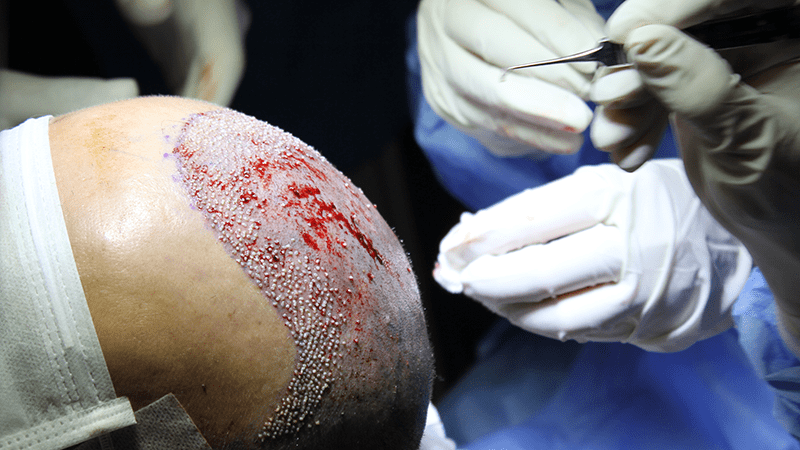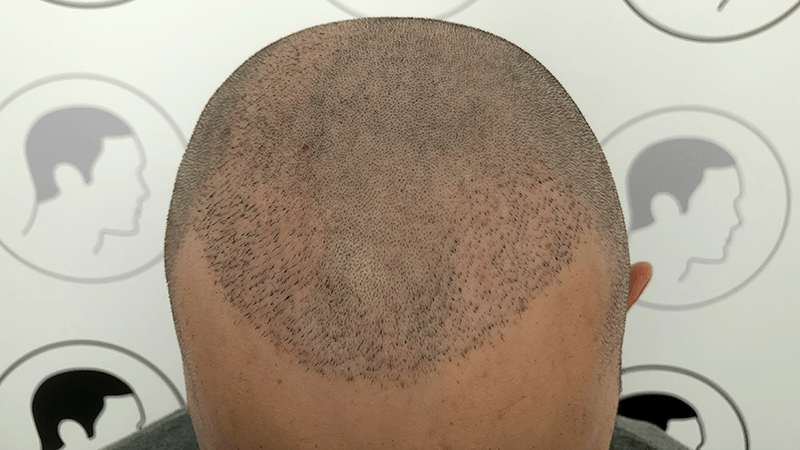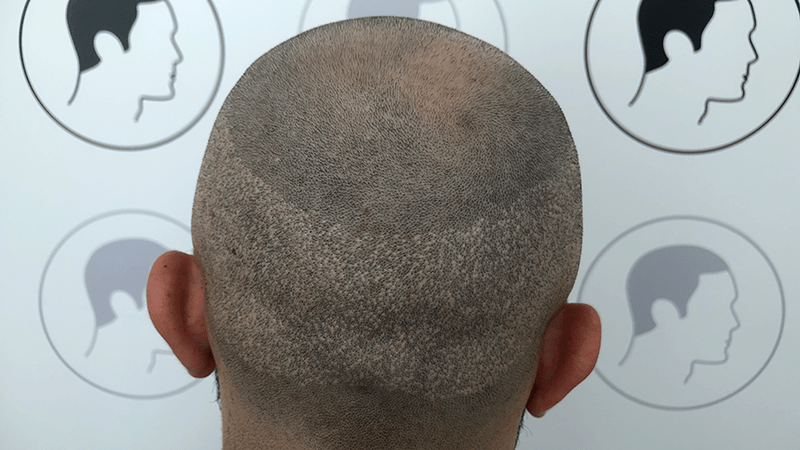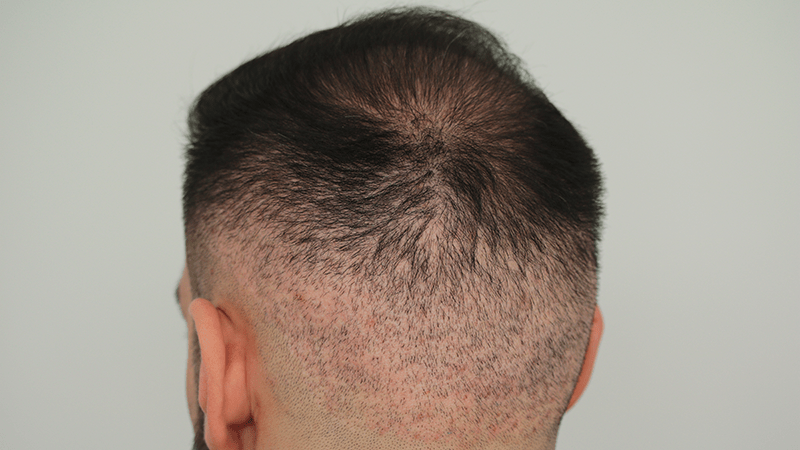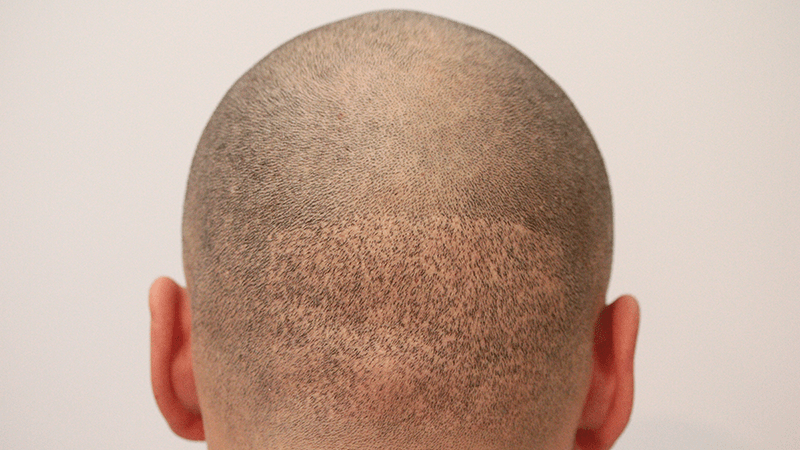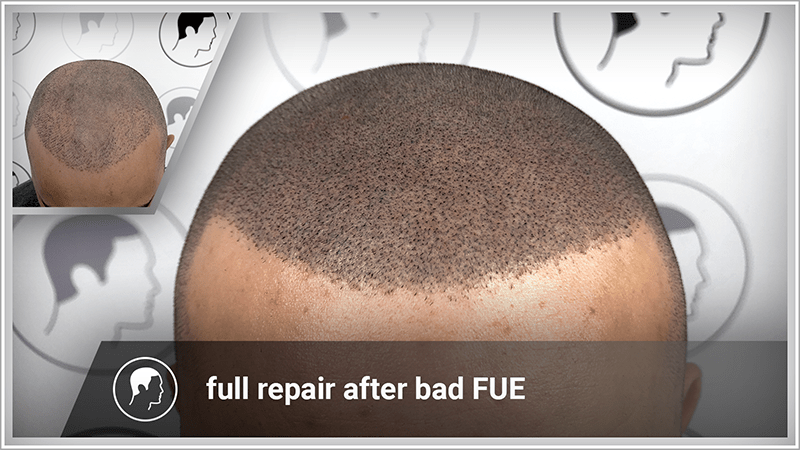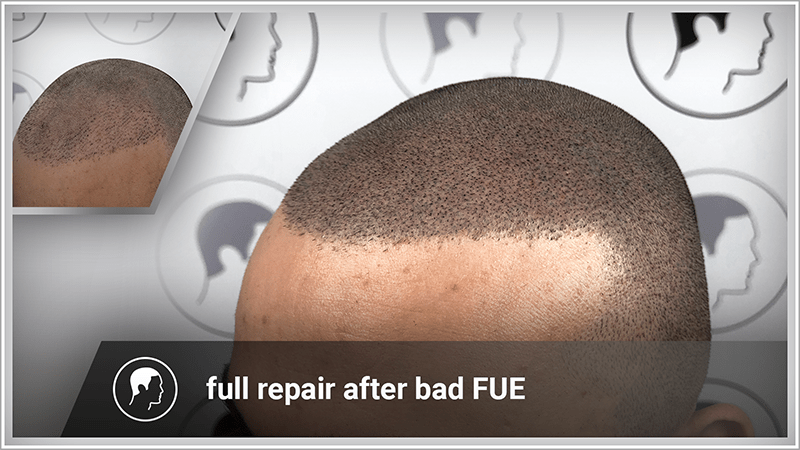An FUE (Follicular Unit Extraction) hair transplant is a popular method for concealing bald patches caused by hair loss. Below, we explain how the treatment works and what the pros and cons are.
What is an FUE hair transplant?
An FUE hair transplant is a type of cosmetic surgery. It’s a way of permanently refilling bald patches on the top of the head or along the hairline with hair. Hair is taken from the donor area at the back of your head and transplanted into the thinning patches on the top of your head or along your hairline.
Who is the treatment suitable for?
The method is suitable for both men and women who suffer from hereditary hair loss (alopecia androgenetica). The FUE method is not suitable for treating other forms of hair loss such as those caused by illness or medication. This is because the transplanted hair could fall out again.
FUE hair transplant: what the procedure involves
An FUE hair transplant can take anything from several hours to several days depending on how advanced your hair loss is. This is what the procedure involves:
- During the treatment, you lie on a bed and the operation is carried out under local anaesthetic. It should ideally be painless.
- The surgeon uses a hollow needle to ‘punch out’ individual follicular units from the back of your head.
- The extracted hair roots and hair follicles are briefly placed in a nutrient solution, their vital functions are examined and they are sorted according to the number of follicles they contain.
- A scalpel is then used to make little incisions in all the bald areas on the top of your head or along your hairline.
- The follicular units are placed one by one into these incisions. Ideally, the surgeon should make sure that the hair roots are transplanted in the natural direction of growth of the existing hair.
After the treatment, the hair roots slowly grow into the scalp. It takes months for them to start producing hair at full strength again. The wounds from the operation also need to heal. Depending on the extent of the operation, you will be able to resume normal life after around 3 to 4 weeks.
Only areas which are not affected by hereditary hair loss are used as donor areas for an FUE hair transplant. This means that the new hairs are immune to hereditary hair loss, and remain in their new position for life. They look slightly different from the existing hair around them, however, because the grafts taken from other parts of the body tend to have more hair follicles. This makes them look thicker than the existing hair. In addition to this, the grafts can’t be placed as close together as naturally growing hair. This is what creates the typical ‘pinhead’ or ‘doll’s head’ look, which many patients are not happy with.
What’s the difference between the FUE method and the FUT method?
An FUE hair transplant is a gentler, more modern procedure than the FUT method. Instead of removing a whole strip of skin and leaving behind a big scar, an FUE transplant only removes individual hair roots along with hair follicles. So instead of one big surgical scar, you end up with lots of little ones.
Is an FUE hair transplant a permanent solution to hair loss?
Yes and no. After an FUE hair transplant you can enjoy the look of full hair again, at least for a while. But as soon as your hair loss progresses and new thinning patches appear, you’ll need another operation. So a single FUE hair transplant is not necessarily a permanent solution. You should also be aware that the scars from an FUE hair transplant are visible. They make the hair on the back of your head look thinner.
Scalp micropigmentation after your FUE hair transplant
Scalp micropigmentation is a perfect supplement to your FUE hair transplant. Using this innovative method, we can conceal your FUE surgical scars in a safe way. Please remember that your scars have to be completely healed first. This means you need to give the fresh wounds at least six months to heal. Scalp micropigmentation is also suitable for making your hair look thicker following an FUE transplant, because FUE alone cannot recreate your natural hair density. And if you’re unhappy with the results of your FUE hair transplant, we can help: using scalp micropigmentation, we can simulate an attractive close-shaven look for you.
Find out more about scalp micropigmentation today
We’ll be happy to tell you all about the innovative method of scalp micropigmentation. Just send us some photos of the affected areas and we’ll provide you with detailed personalised advice. The team at Modern Hair Loss Solution® look forward to helping you!
We’re here to help:
send us your photos now!
